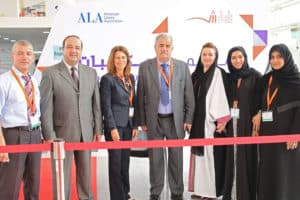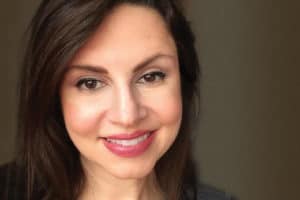
On August 14, Donna Scheeder, president of the International Federation of Library Associations and Institutions (IFLA), welcomed 3,200 delegates from 137 countries to the 82nd IFLA World Library and Information Congress (WLIC) in Columbus, Ohio.
The Opening Session celebrated its host state with appearances from Cleveland Cavaliers announcer Olivier Sedra and some animal ambassadors from the Columbus Zoo and Aquarium. It also recognized the state’s history as the “birthplace of aviation” with an aerialist tribute to the Wright Brothers and a video message from astronaut and former US Senator John Glenn, among other highlights.
The conference coincided with the 2016 Summer Olympic Games in Rio de Janeiro, and Sedra compared the 137 countries represented at IFLA to the 206 competing in Brazil—“That, my friends, is Olympic-level engagement!”
This year’s WLIC theme was “Connections, Collaboration, Community,” and these concepts recurred in many of the conference sessions.
Connecting to protect collections
Connections between libraries and other organizations—locally, regionally, and internationally—were emphasized as a way to protect collections from disasters and theft.
In “Preparing for Disasters: Methods and Case Studies for the Safeguarding of Documentary Cultural Heritage,” panelists addressed the topic from a variety of angles. Bogdan Filip Zerek, head of the conservation department at the National Library of Poland, showed how the library combated the effects of water damage in the Krasiński Palace in Warsaw, which houses the library’s iconographic collections. After extensive microbiological sampling, they concluded that mold growth had infected the building and potentially the collections. As a result, thousands of items had to be relocated in order to both repair the building and test the collection for damage. The relocation alone took almost two years, and some of the collection had to be disinfected.
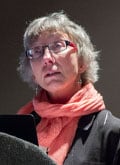
Jeanne Drewes, chief of binding and collections care at the Library of Congress, presented an overview of disaster risk management.
“When there is a disaster, cultural heritage institutions are vulnerable,” she said. It’s a notion that is often forgotten during a disaster, when saving human lives is paramount. Getting staff involved is key, she added, because long-term staff members may be aware of how past disasters were addressed. Drewes also recommended having continued conversations with first responders and fire marshals and implementing practice scenarios with staff.
Adetoun Adebisi Oyelude from the Kenneth Dike Library at the University of Ibadan in Nigeria detailed problems that have affected three libraries in Nigeria, including theft, porous security networks, untrained security guards, vehicular restraints, defective or nonexistent preservation techniques, lack of insurance, low funding, and bug damage. The preventative measures ranged from the modern to the indigenous, as one rural library spread the blood of dogs around the library to get rid of termites.
The program was rounded out by Sam Meister, preservation communities manager at the Educopia Institute in Atlanta, who examined the loss of digital data during catastrophic events. Meister discussed how the MetaArchive Cooperative, an independent preservation network, makes seven digital copies of its members’ digital data, then splits, encrypts, and spreads the data among other network members’ servers.
The August 16 session “Theft in Libraries: Facing the Hidden Truth,” sponsored by the IFLA Strategic Programme on Preservation and Conservation and its Rare Books and Special Collections Section, brought together librarians, booksellers, and a law enforcement specialist to discuss how to curtail theft and what to do when it is discovered.
Michael Zubal, a manager of Zubal Books in Cleveland, whose store has intercepted stolen rare books, recommended that libraries do the following to make recovery of stolen books easier:
- Mark all rare materials clearly on the title page.
- Mark all deaccessioned books to show that they have been withdrawn and not stolen.
- Include copy-specific information in cataloging records.
- Report losses and thefts immediately to local booksellers, law enforcement, and missing-book blogs and lists run by the Antiquarian Booksellers Association of America, the International League of Antiquarian Booksellers, the Art Loss Register, the ALA Rare Books and Manuscripts Section’s Theft Report Updates, and Interpol’s database of stolen works of art.
Also on the program was Greger Bergvall, map and manuscripts librarian of the National Library of Sweden, who described the theft and resale of at least 62 rare books by Anders Burius, the chief of the library’s manuscript department, between 1995 and 2004. Bergvall said the theft was discovered in October 2003, when a German researcher asked for information about the library’s copy of a German edition of The Illustrated Mississippi by Henry Lewis. When it was found missing, “a secret inventory was ordered by a group of managers that a year later unveiled systematic inside thefts at the library.” Burius then confessed his involvement to the inventory group, turned himself in to Swedish police in November 2004, and was released prior to trial, but committed suicide a month later by blowing up his apartment.
Bergvall added that stolen books often make their way to Germany, where auction houses are allowed to transfer a valid title to stolen goods if they are offered at a public auction. “Booksellers and auction houses must begin to ask more questions,” he said. “Libraries must act to break the chain of buyers and stay involved in the police investigation. Police are not the book experts.”
Federal Bureau of Investigation (FBI) Special Agent Luigi Mondini emphasized that thefts of rare materials from academic libraries are severely underreported. “This is both due to embarrassment and because some thefts are never discovered until the items are recovered,” he said. The FBI’s Art Crime Team can offer the resources of the FBI in resolving thefts from libraries. “Be wary of your own staffs,” he cautioned. “Some 80% of all thefts are by insiders.”
Collaborating to improve information
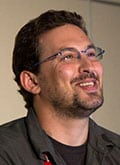
Another major theme of WLIC was collaboration between libraries and other information champions, such as health agencies and internet behemoth Wikipedia.
Wikipedia and libraries are allies and need to work together, according to Alex Stinson and Jake Orlowitz of the Wikimedia Foundation. Their forum, “Library Engagement and Wikipedia,” explained how and why the two often at-odds factions should join forces to provide more complete and accurate scholarship.
The breadth and scope of information available on Wikipedia leads to questions of authenticity. With so many encyclopedic entries, all written and sourced by volunteers, how can the content be verified for accuracy? Librarians are key to closing those gaps, according to Stinson and Orlowitz.
In January 2016, the foundation started the #1Lib1Ref campaign to recruit help in this task, inviting libraries to host referencing events during which participants confirm citations on Wikipedia entries. Twelve libraries and institutions from three countries hosted events in January, and another round of the campaign is in the works.
Health literacy—as well as determining health publications’ efficacy—was at the center of the research and case studies presented in “From Action to Impact: Health Information Professionals Connecting Communities,” a session held August 17. Librarians presented findings from diverse initiatives, campaigns, and studies focusing on the librarian’s role in facilitating health information for the public and acting as a bridge to professional medical resources.
Praba Naidoo of the University of KwaZulu-Natal in Durban, South Africa, presented on a study that examined the connection between librarians, dietitians, and patients affected by type 2 diabetes. “Information provision is especially important for the management of type 2 diabetes,” especially for those from “economically disadvantaged communities,” said Naidoo.
Dijana Sabolović-Krajina, from the Public Library Fran Galović in Koprivnica, Croatia, said her library has been actively promoting health literacy since 2008 through partnerships with hospitals, health institutes, nongovernment organizations, and individual health professionals. One innovative and successful program has been “Health Tips under Library Parasols,” where library users and health professionals gather outdoors in summer for conversations and demonstrations geared to preventative medicine and health literacy.
Libraries improving communities
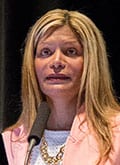
The takeaway from IFLA’s Asia and Oceania Section presentation on August 15 was how libraries in many countries—from highly industrialized economies to fragile island states, from the Middle East to French Polynesia—can help people find the information they need to create sustainable communities.
Section Chair Jayshree Mamtora said that the problems these countries face—relations with indigenous peoples, developing economies, immigration, climate change, multilingual populations, and communication over vast distances—are all being addressed by libraries that are experimenting with new ways of contributing to the social and economic development of the communities they serve.
Keynote speaker Loida Garcia-Febo, a library consultant with international expertise and a member of the IFLA governing board, noted some of the ways citizen access to information can be used as a tool for education, engagement, and empowerment:
- Los Angeles Public Library helps immigrants fill out forms for naturalization.
- Toronto Public Library provides Newcomer Settlement Services for new Canadian residents.
- The San Juan Planes community library in Honduras began a project to bring safe drinking water to the community.
- The National Library of Uganda offers a tech training program in local languages for female farmers, showing them how to read weather forecasts, follow crop prices, and set up online markets.
Because libraries are essential to global development, IFLA was instrumental in getting access to information included as part of the 17 Sustainable Development Goals of the United Nations to be achieved by 2030. Sustainable Development Target 16.10 is to “ensure public access to information and protect fundamental freedoms, in accordance with national legislation and international agreements.” The 2030 Agenda is a global plan of action for people, the planet, and prosperity. Garcia-Febo added, “We hope these initiatives encourage associations, national libraries, and librarians in general to advocate for the inclusion of libraries in national government agendas.”
Library designs that embrace the community
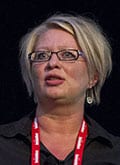
Librarians, library administrators, and architects gathered for the forum “What Comes After the ‘Third Place’? Visionary Libraries—Space and Users” to discuss the library as both the third place and as a community gathering point that looks to the future.
Marie Ostergaard, head of community engagement at Dokk1, in Aarhus, Denmark, led the session with a detailed presentation on the Dokk1 project and how it reenvisions the library-going experience. Dokk1 is a massive, open-air complex in the city center on the waterfront that encompasses the main library, open squares, a light-rail connection, and automated underground vertical parking. The project took 10 years to finish at a cost of $305 million, and it won IFLA’s 2016 Public Library of the Year Award.
Ostergaard described Dokk1 as the “living room of the city,” and as such it is less focused on books and more focused on human needs, providing space for performances, meetings, children’s activities, art installations, and general public gatherings. The citizens of Aarhus have accepted the newly configured library with open arms. Dokk1 serves 4,000 visitors daily, according to Ostergaard.
At “Green Libraries: Together for All,” the IFLA Environmental Sustainability and Libraries Special Interest Group discussed the effects of climate change on libraries, shared the application of environmental practices, and presented the IFLA Green Library Award to Pequeño Sol ecological library, San Cristóbal de las Casas, Chiapas state, Mexico, for its new crowdfunded and community-constructed building extension that incorporates renewable energies and recycled materials.
Immigrants and the library
Service to immigrant populations is an increasingly important part of the library’s mission, as refugees or displaced persons are relocated in the United States and Europe, sometimes in places reluctant to have them. The ALA’s Ethnic and Multicultural Information Exchange Round Table issued Guidelines for Outreach to Immigrant Populations in December 2015. But refugees and immigrants seeking a new homeland are not a new phenomenon, and several speakers at “Libraries and Immigrants: Historical Perspective,” sponsored by the IFLA Library History Special Interest Group, offered some insights.
Irene Münster, associate director of the Priddy Library for the Universities at Shady Grove in Rockville, Maryland, described the waves of Jewish immigrants to Argentina from 1889 to the 1930s, many of whom established their own library collections in Yiddish, Russian, German, or Polish languages in the towns and cities they settled in.
In the 1930s, to support Jews who had escaped Nazi Germany, a Bibliothek der Lesefreunde was established in Buenos Aires to “rescue and preserve the German values found in books the émigrés brought with them or that were already in Argentina—books that were burned on May 10, 1933, in Germany,” Münster said, “for being considered degenerate or anti-German.” Münster and other interested groups have been trying to locate and preserve the books originally held by these libraries in Argentina.
Raymond Pun, first-year student success librarian at California State University, Fresno, presented his research on the novelist Ameen Rihani (1876–1940), whose Book of Khalid, published by Dodd, Mead, and Company in 1911, was the first novel in English written by a Lebanese Arab-American. Although little known today, Rihani’s book was illustrated by the better-known Lebanese artist and poet Kahlil Gibran.
Sharon McQueen, a faculty member at the University of Wisconsin–Madison, discussed the life of librarian and editor May Massee (1881–1966). During her long tenure, McQueen said, she published books by foreign authors and illustrators, as well as titles set in foreign countries, a rarity at the time.
Removing barriers to indigenous knowledge
Natural languages and dialects, specificity of local terms, and community input should all be taken into account when classifying and indexing indigenous materials, according to panelists at “Reclaiming Subject Access to Indigenous Knowledge,” on August 16.
Cristina Villanueva, librarian at the University of the Philippines Baguio, presented her findings on classifying and indexing Philippine indigenous materials, with a special emphasis on the Cordillera Administrative Region, “home to the largest concentration of ethnolinguistic roots” in her country, she said. Villanueva noted that while it’s her university’s cataloging policy to use the Library of Congress classification scheme, the Library of Congress Subject Headings (LCSH) are limited and ineffective when applied to the Cordillera Studies Collection Library.
One of the limitations in using LCSH, according to Villanueva, is the lack of local terms and the fact that there are no English or American counterparts for words reflecting traditional customs, practices, and indigenous knowledge. For example, there is no subject heading that accurately reflects “headhunting,” an indigenous political and justice system in Cordillera culture. Instead, LCSH erroneously applies a lead-in term for “employee recruitment.”
Christine Bone, cataloging librarian at the University of Manitoba Libraries in Winnipeg, also spoke to the shortcomings of LCSH and the modifications her group made to an archives database to improve access to Manitoba-specific indigenous materials. Bone’s group started its project by identifying problematic headings and debating and analyzing these terms with consultation from First Nations communities.
Changes included updating the word Indian to indigenous and replacing the term mythology with spirituality in headings. Ultimately, decisions had to remain internally consistent and “fit back into” the LCSH framework, said Bone.
Sharon Farnel, metadata coordinator at the University of Alberta Libraries in Edmonton, described the three-year, grant-funded Digital Library North (DLN) project serving the Inuvialuit Settlement Region in the Western Arctic of Canada and its goal of enhancing indigenous subject access across a remote 91,000-square-kilometer region that has rich culture, language, and history but limited resource sharing.
Inclusive school libraries
What’s the best way to provide resources, instruction, and librarianship to both typically and differently able students? At “Inclusionary Practices to Support School Libraries,” librarians attempted to answer this question by examining inclusionary and accessibility strategies in school libraries.
Clayton Copeland and Karen Gavigan, both instructors at the University of South Carolina School of Library and Information Science, shared findings from a middle-school classroom they observed in a rural, low-income area of the southeastern US. They noted that one challenge to creating an accessible environment is a hesitation and fear among librarians about knowing what “developmentally appropriate teaching strategies” are for students.
Valérie Glass, of the Association des Professeurs Documentalistes de l’Éducation Nationale in Paris, also studied how programs and activities in schools can reach students of different abilities and backgrounds. “There’s an inclusive dimension enshrined in most French educational acts,” said Glass. Her research found that key to creating an inclusive environment is adopting a wide range of resources and library materials for different abilities. Glass suggested video games, manga, and magazines as items to attract differently able students.
Isabel Mendinhos, of the School Library Network in Lisbon, Portugal, found that very little was being done in her country with regard to special needs educational services. Her organization sought to provide schools with adequate resources in accessible formats and bring some measure of consistency, adequacy, involvement, and sustainability to the collaborative work between school librarians and special education teachers.
The program, in partnership with the Ministry of Education, reached 7,309 students across 72 districts and brought more inclusive teaching materials—such as worksheets, puzzles, subtitled videos, and multisensory books—to schools. As a result, librarians noticed changes in attitudes among students, and special-needs students started using the library of their own initiative.
An invitation to Poland … and Malaysia
At the IFLA WLIC 2016 Closing Session, Rafał Dutkiewicz, mayor of Wrocław, Poland, and Tomasz Makowski, director general of the National Library of Poland, extended an invitation to the audience to come to IFLA WLIC 2017 in Wrocław. Patrick Losinski, CEO of Columbus Metropolitan Library, and Carol Diedrichs, Ohio State University’s director emeritus of university libraries, cochairs of the IFLA WLIC 2016 National Committee, thanked the planning committees and many volunteers who made this year’s conference possible. They presented Dutkiewicz and Makowski with a set of bookends made from granite used in the construction of the Ohio Statehouse.
IFLA WLIC 2018 will be held in Kuala Lumpur, Malaysia. Nafisah Ahmad, director general of the National Library of Malaysia, invited the audience to come explore a “warm and friendly country that enjoys a tropical climate all year long,” replete with heritage sites, rain forests, modern infrastructure, and an award-winning convention center.
Scheeder renewed her call to action to librarians to make their field strong by supporting access and opportunity for all.
“I’m happy to say I saw action at this meeting and a commitment to positive change,” said President Scheeder at the Closing Session. “What went on here must become a movement.”
See our complete IFLA WLIC 2016 coverage at americanlibrariesmagazine.org.

